Sufetula or Sbeitla is a small town in north-central Tunisia containing
the best preserved Forum temples in Tunisia
the largest city in the Kasserine Governorate with an area of 1133.5 km2.
It is located in 33 km in the west of the governorate, and 264 km to Tunis.

The oldest traces of civilization in the zone are Punic megaliths and funereal stela.
The region was inhabited by nomadic tribes until the Legio III Augusta established a camp at Ammaedara.
Through the surrender of the Berber leader Tacfarinas the region was pacified and populated under the Emperor Vespasian and his sons between 67 and 69.

The city began to decline during the Late Empire, during which the city was surrounded and occupied by Vandals, a fact that is demonstrated by the appearance of temples dedicated to the barbarian gods.
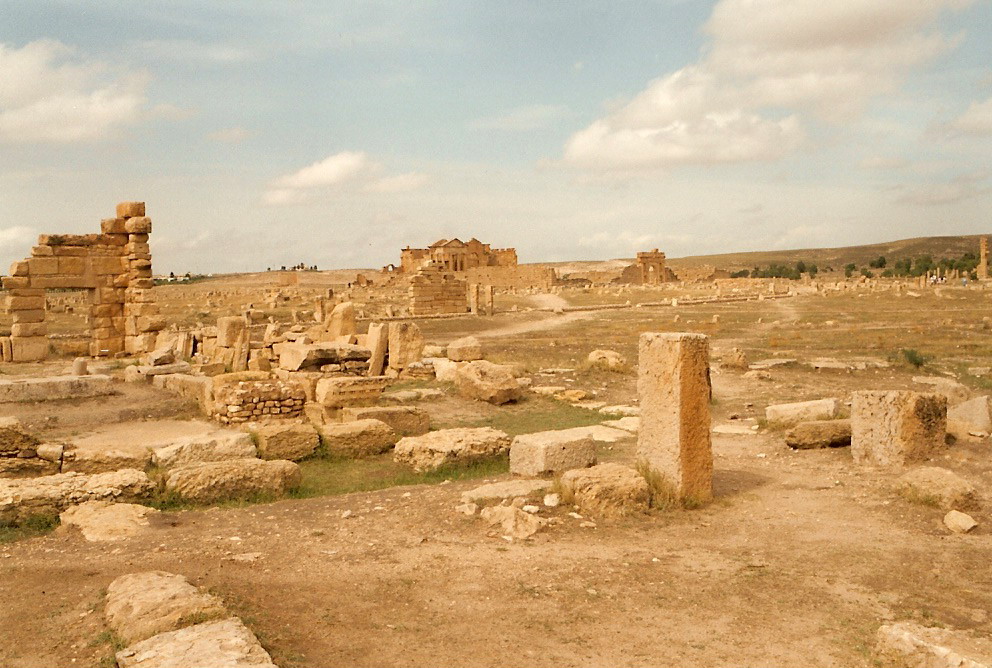
The arrival of the Byzantines inaugurated a new period of splendor. In 647, the fields before the city were the site of a major battle between the Byzantines and Berbers of Gregory the Patrician and the Rashidun Caliphate's governor of Egypt, Abdullah ibn Saad.
The battle ended in a decisive Muslim victory, which shook Byzantine control over the region and signalled the beginning of the Muslim conquest of North Africa.
the roman bridge and aquaduct
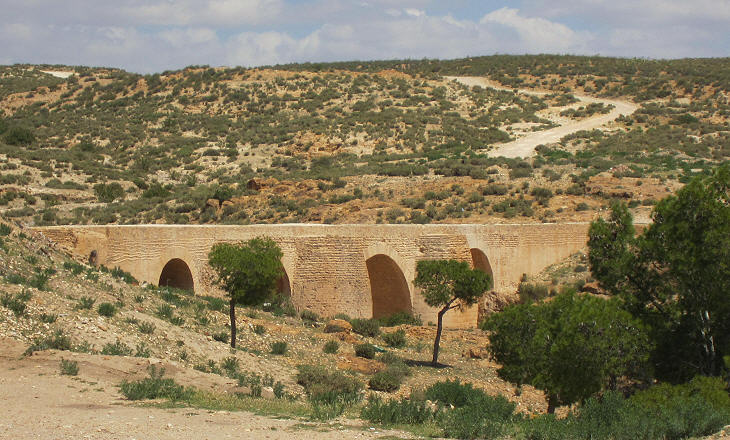
The Roman ruins of Sufetula, containing the best preserved Forum temples in Tunisia are nearby.
One of the best preserved archaeological sites in Tunisia, most of the really impressive building are from the second and third centuries which is when Sbeitla enjoyed its most prosperous times.
Triumphal arch to Emperor Diocletian at the entrance to the town
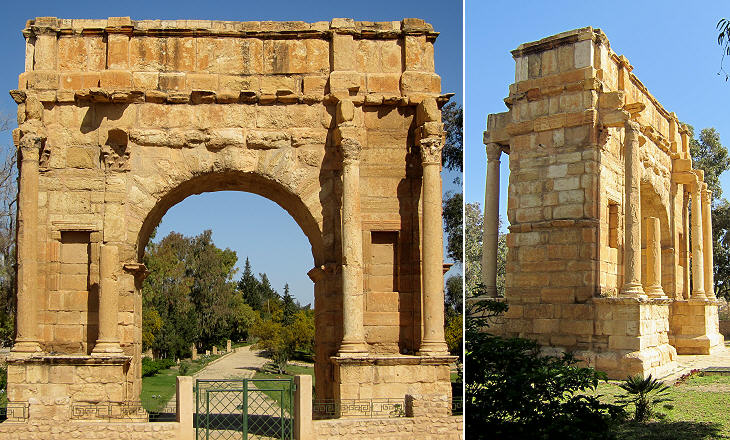
Sufetula was founded by veterans of Legio III Augusta, the Roman legion stationed in Africa, at the time of Emperor Vespasian.
It has the typical design of Roman towns with a grid of perpendicular streets. It was situated along the Roman road which linked Carthage to Theveste, a town in today's Algeria where the legion was stationed.
Arch of the Antonines
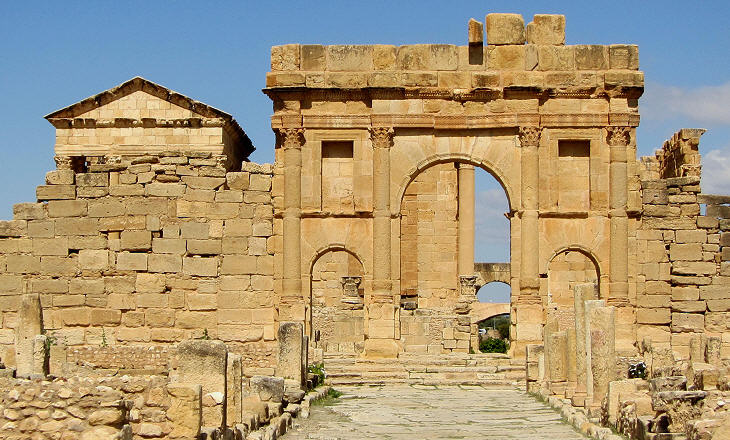
For there is first of all a sumptuous triumphal arch of the Corinthian order, consisting of one large arch, with a lesser one on each side of it, with these few words of the dedication remaining upon the architrave "Imp. Caesar Aug./Onin//Suffetulentium/Hanc edificaverunt/et DD.PP
Today the arch is believed to have been built at the time of Emperor Antoninus Pius.
It gave access to the Forum of Sufetula, which, similar to what occurred at many other locations (e.g. Thugga and Musti), was turned into a fortress by the Byzantines in the VIth century. You may wish to see the walls of the fortress in the introductory page.
From this arch (..) we pass (..) to a spacious court. Here we have the ruins of three contiguous temples, whose several roofs, porticoes, and facades, indeed are broken down, but the rest of the fabric, with its respective columns, pediments and entablatures, remain perfect and entire
front side temples

Capitolium: cellae housing the statues of Juno (left), Jupiter (centre) and Minerva (right)
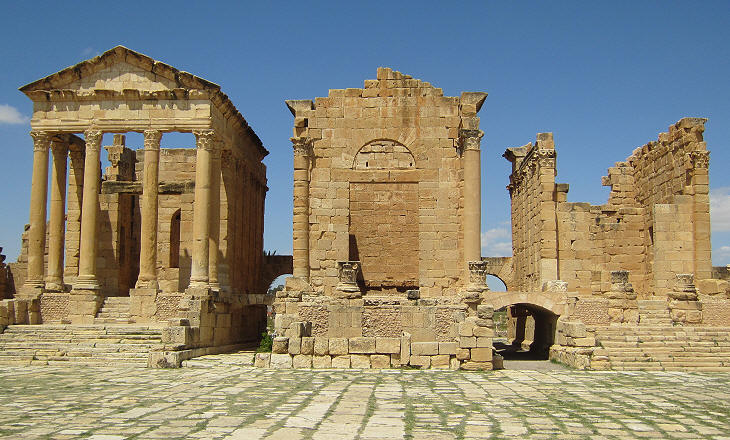
bqck side temples

The design of the Capitolium of Sufetula is almost unique because the three deities were worshipped in separate cellae and yet it would be erroneous to speak of three temples because bridges linked them and allowed access to the central cella which did not have steps.
Among the highlights here are several outstanding arches, a mosaic bath tub and the forum, which is one of the most impressive Roman remains in Tunisia

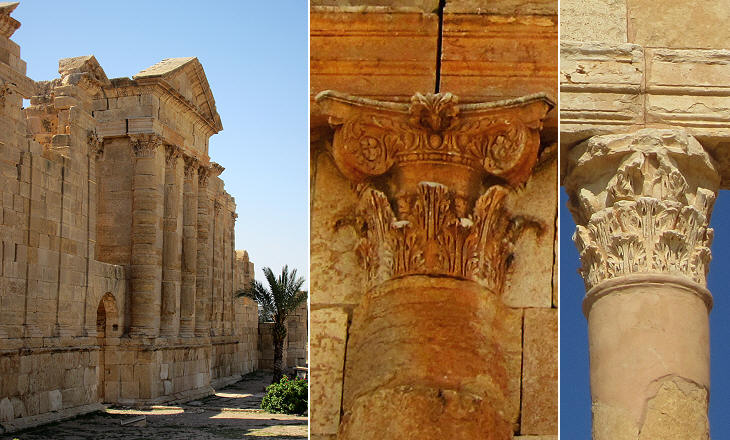



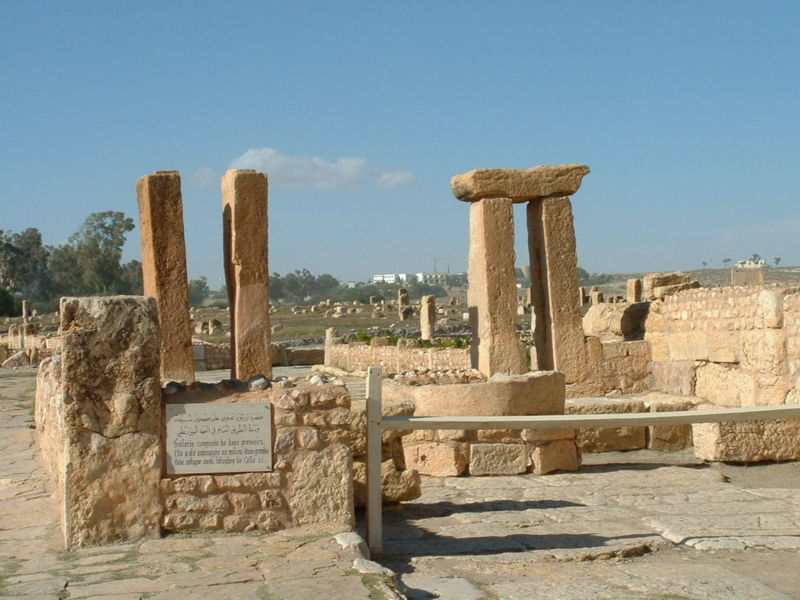


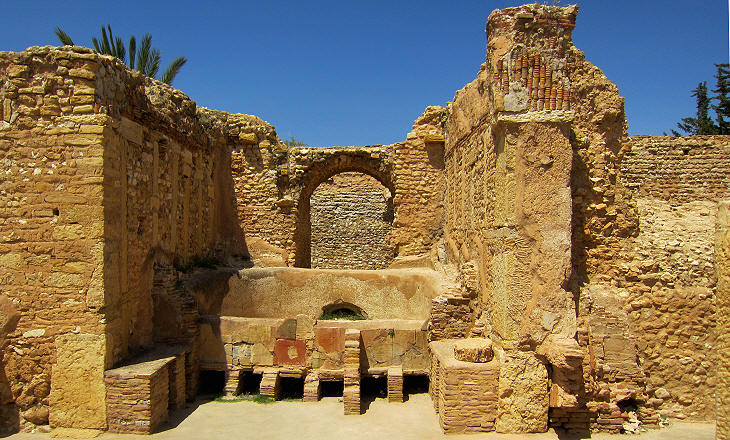







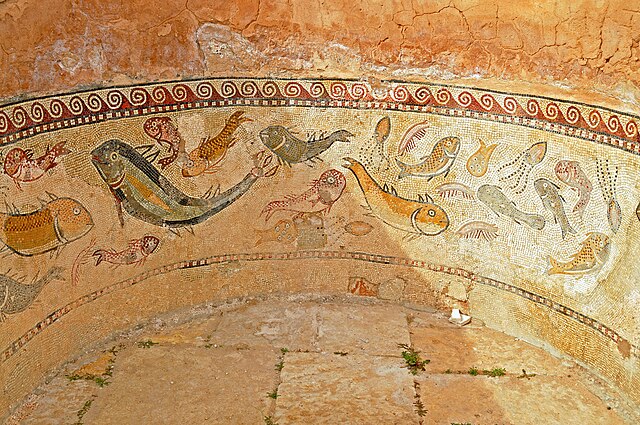








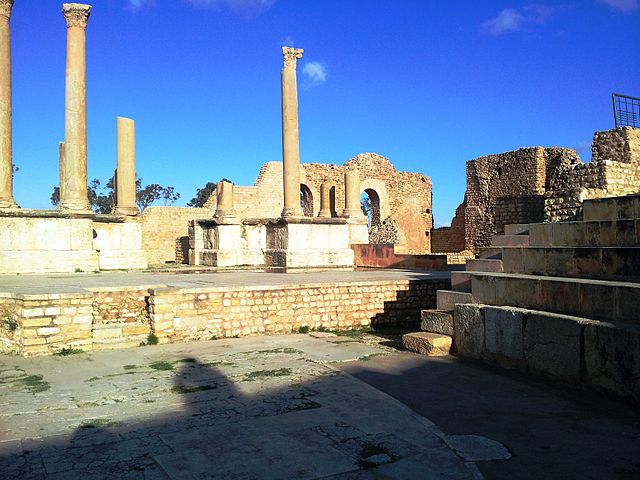
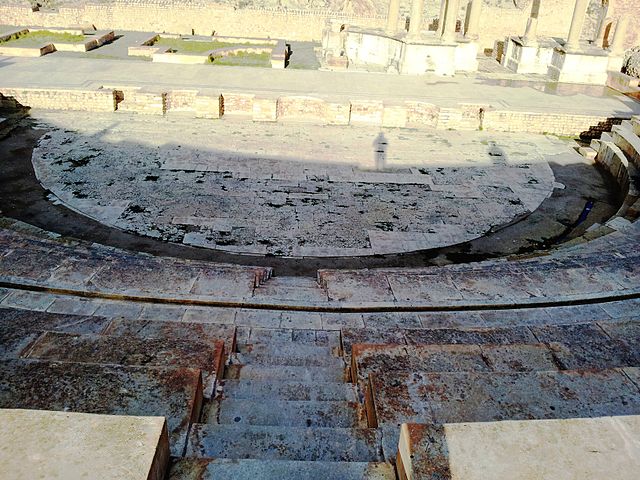

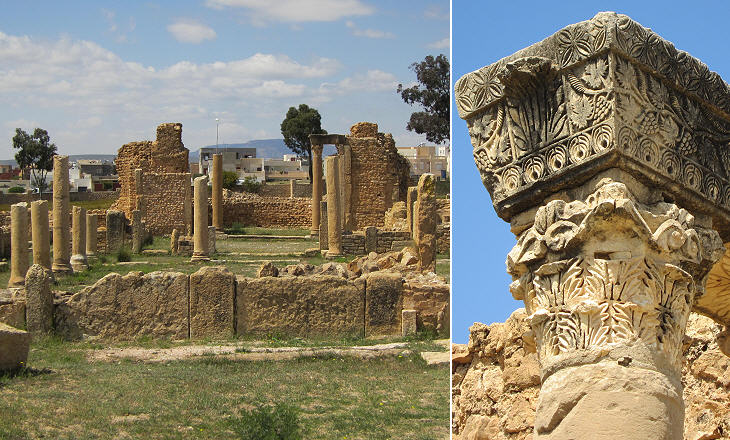
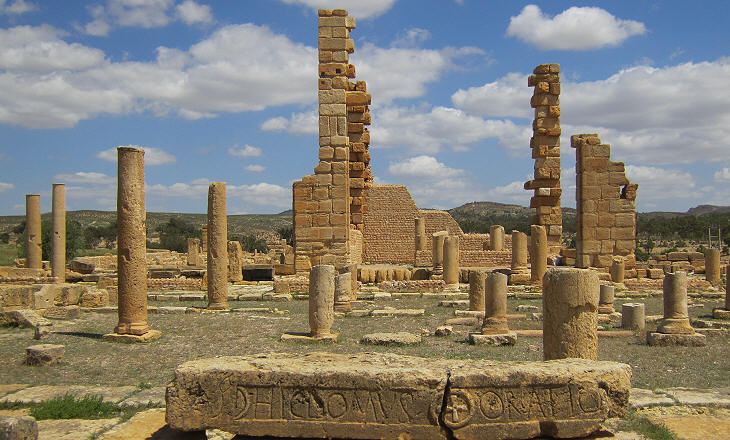





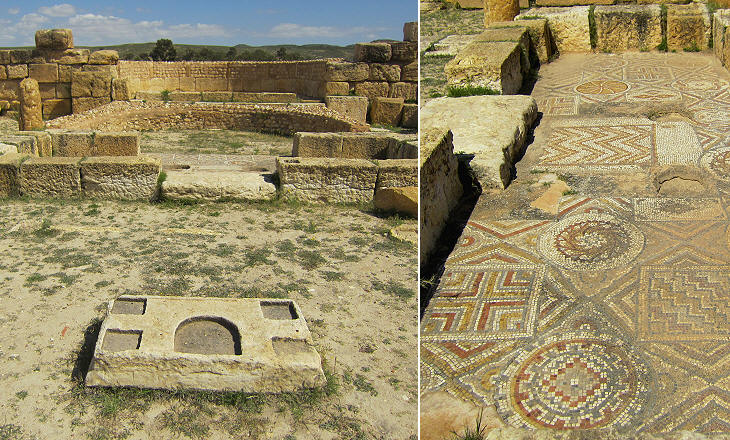


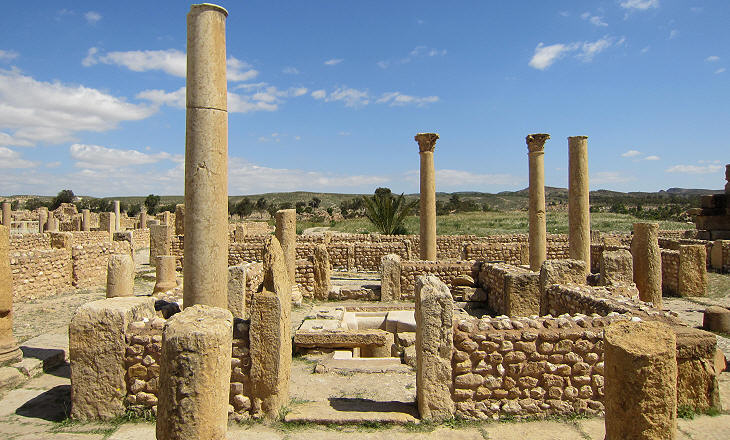
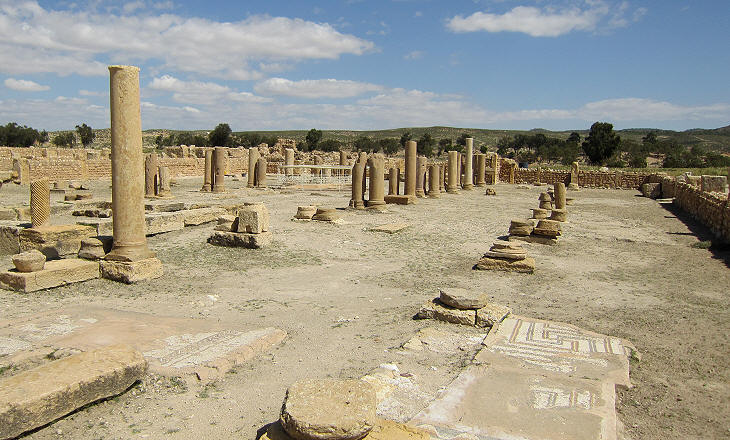
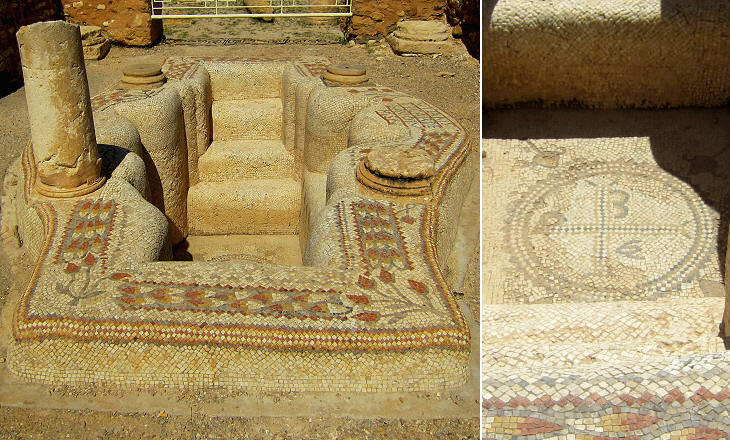


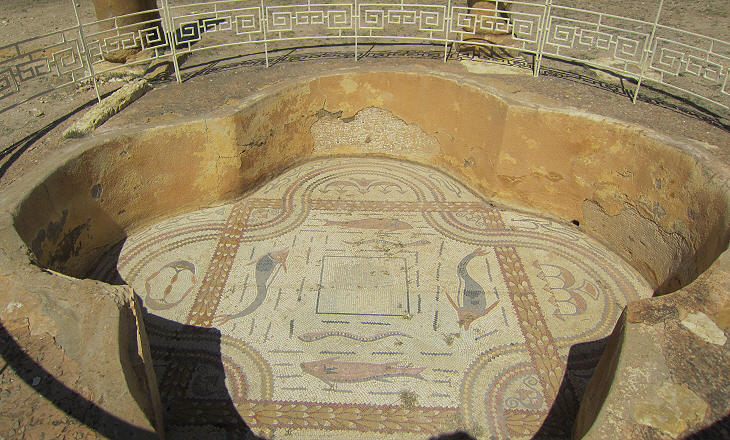

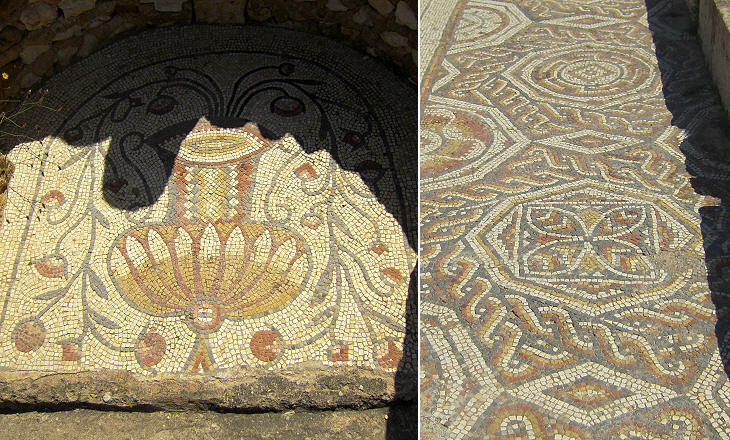









تعليق